Message/Bible Study Preparation Guide
- Do you feel like you need better structure when putting together a Bible study?
- Do you want to make sure you’re getting as much as possible from your message preparation?
- Or maybe you need a fresh perspective on your study of the Bible.
- Have you wanted to do a Word Study in Hebrew, Greek, English or Strong’s but didn’t know where to start?
Product Highlights:
- Usable with theWord, or Physical book resources.
- Practical and tailored to Biblical Hebrew Studies, Biblical Greek Studies or to English/Strong’s Studies.
- 104 pages in print.
“Koehn uses the word “Guide” in his title. Good choice! As I was preparing the review, I kept thinking “field manual,” like a bird watcher might use; perhaps lacking in some detail, but quickly pointing out “what it is” and “what it isn’t.” The text is less academic, and more practical, than a typical “hermeneutics” or “homiletics” book.” by Dr. Dave Thomason — See full Review by Dr. Dave Thomason below!
theWord Features:
- Verse popups
- Fully searchable text
- Easy navigation of topics via topics tree display.
- Special Text Colors
- Normal: Text
- Hyperlink: Gen. 9:8
- Strong’s Numbers: H3034
- Greek: πλάνος
- Hebrew: אֱלֹהִ֑ים
A Word for the Day: Key Words from the New Testament
DESCRIPTION
Unearth the wealth of treasures “buried” in the original language of Scripture! Watson’s devotional helps those who don’t know Greek achieve greater understanding of the New Testament. Each entry focuses on one word through a brief study, an application for daily living, related verses for further exploration, and suggested prayer topics. 384 pages, softcover from AMG.
Publisher’s Description
Learn a Biblical Greek WORD Everyday.
The purpose of a Word of the Day is to share the richness of the Greek language used in the New Testament and help make these words practical in the reader’s Christian living. Because words do matter, the words of the New Testament matter most. And in a day when words don’t seem to mean much, the need for precision in Christian doctrine and practice has never been more critical.
For each day of the year, Watson presents a brief word study and then offers an application to make that particular Greek word become real for practical living. To aid reinforcement, related verses are listed for the reader’s personal study.
Doc Watson fulfills his desire of many years to provide daily devotionals that not only contain deep spiritual truth, but also are easy to read and understand. In this day of relativism, the absolutes of God’s Word (and words) are desperately needed. These brief devotionals will enrich the mind, stir the soul, and empower the life of God’s people.
theWord Features:
- Devotional 366 daily sync
- Verse popups
- Fully searchable text
- Footnotes
- Easy navigation of topics via topics tree display.
- Scripture Index
- English Word Index
- Greek & Hebrew Word Index
- Strong’s Number Index
- Special Text Colors
- Normal: Text
- Hyperlink: G3845| Gen. 9:8
- Greek Transliteration: archon
- Hebrew Transliteration: YHWH
- Greek: εὐδόκησα
- Hebrew: יְהוָה
Greek Grammar Beyond the Basics
The first textbook that systematically links syntax and exegesis of the New Testament—perfect for students of Greek who are “second-year” or at an intermediate level.
For seminary students, the goal of studying Greek grammar in the first place is to ultimately get beyond the grammar itself and understand it well enough to use it in the accurate exegesis of biblical texts.
Greek Grammar Beyond the Basics—the most up-to-date Greek grammar available—integrates the technical requirements for proper Greek interpretation with the actual interests and needs of Bible students. It explores numerous syntactical categories, some of which have not previously been dealt with in print, and has a number of distinguishing features, including:
Exegetically significant illustrations, discussed in depth.
Semantic situations—or contexts for simple semantics—are developed and analyzed.
Expanded definitions and numerous examples and syntactical categories.
Grammatical statistics listed at the beginning of major sections.
Scores of charts, tables, and graphs.
Sound exegesis requires that the exegete consider grammar within a larger framework that includes context, lexeme, and other linguistic features. This textbook faithfully equips intermediate Greek students with the skills they need to do exegesis of biblical texts in a way that is faithful to their intended meaning.
The expanded edition contains a subject index, a Greek word index, and page numbers in the Syntax Summary section.
About the Author
Daniel B. Wallace (PhD, Dallas Theological Seminary) is professor of New Testament at Dallas Theological Seminary. He is a noted textual critic, serving as head of the Center for the Study of New Testament Manuscripts, and is author of Greek Grammar beyond the Basics, Basics of New Testament Syntax, and (with Grant Edwards) of A Workbook for New Testament Syntax.
theWord Features:
- Verse popups
- Fully searchable text
- Footnotes
- Page Number: [pg21>
- Page links in index
- Easy navigation of topics via topics tree display.
- Greek words index
- Subject index
- Verse page index
- Syntax Summaries
- Cheat Sheet
- Special text colors
- Normal: Text
- Hyperlink: Luke 20:21
- Greek: χρησις
Myths and Mistakes in New Testament Criticism
Since the unexpected popularity of Bart Ehrman’s bestselling Misquoting Jesus, textual criticism has become a staple of Christian apologetics.
Ehrman’s skepticism about recovering the original text of the New Testament does deserve a response. However, this renewed apologetic interest in textual criticism has created fresh problems for evangelicals. An unfortunate proliferation of myths, mistakes, and misinformation has arisen about this technical area of biblical studies.
In this volume Elijah Hixson and Peter Gurry, along with a team of New Testament textual critics, offer up-to-date, accurate information on the history and current state of the New Testament text that will serve apologists and Christian students even as it offers a self-corrective to evangelical excesses.
Around 367 pages.
theWord Features
- Verse popups
- Fully searchable text
- Footnote(s)
- Easy navigation of topics via topics tree display.
- Special Text Colors
- Normal: Text
- Pages: [p1>
- Hyperlink: Link | Jn 3:36
- Greek: λογος
- Hebrew: א
- Sahidic: аϥϯпЄЧОУОЄІ ЄРОЧ
Pocket Dictionary for the Study of New Testament Greek
If you are beginning your study of New Testament Greek or Greek exegesis, this book is for you!
From ablative to zeugma, it defines the tangled terms that infest Greek textbooks, grammars and lexicons.
Here is the book to deliver you from late-night ponderings of the predicate and frantic fumings over the fricative. It is the indispensable lexicon to that third language that is neither Greek nor recognizable English: the technical vocabulary of grammarians, lexicographers, linguists and Greek instructors. What’s more, this pocket dictionary gives you the inside edge on the terminology of exegesis, textual criticism and biblical criticism.
Careful definitions, helpful examples and copious cross-references make this economically priced, brief dictionary easy to use. And its convenient size will make it a constant companion in your study of the Greek New Testament.
theWord Features
- Verse popups
- Fully searchable text
- FootNote(s)
- Easy navigation of topics via topics tree display.
- Special Text Colors
- Normal: Text
- Hyperlink: Link
- Page Number: [pg1>
- Greek: λογος
- Hebrew: א
Pastor/Elder/Minister Package
Strong’s Number Package
Advanced Greek Package
Intermediate Greek Package
Basic Greek Package
Going Deeper with New Testament Greek
Updated to 2020 Version!
In his final letter to his foremost disciple, the apostle Paul made this solemn appeal: “Be diligent to present yourself to God as one approved, a worker who doesn’t need to be ashamed, correctly teaching the word of truth” (2 Tim 2:15). The message is clear: Timothy (and, by implication, all teachers of God’s Word) must work hard to arrive at a correct interpretation of any given passage of Scripture. Such careful attention to correctly interpreting Scripture was to set Timothy apart from false teachers such as Hymenaeus and Philetus (2 Tim 2:17). Since the NT was written in Greek, and since inerrancy and inspiration extend specifically to the Scriptures in the autographs (original manuscripts), a good working knowledge of NT Greek greatly enhances one’s interpretive skill.
In this book, we hope to stir in you a passion, and to provide you with the necessary tools, to “go deeper” in your pursuit of your mastery of NT Greek. You’ve taken a course or two in elementary Greek, or perhaps taught yourself by using some of the many helpful tools that are available. You’ve memorized the most common Greek vocabulary, learned the basic forms of the Greek noun, adjective, and verb, studied foundational principles of Greek syntax, and tried your hand at translating NT texts of increasing difficulty. But you know that you’ve got more to learn. We want to help you take your knowledge of NT Greek to the next level, not as an end in itself but as a means to correctly interpreting and teaching God’s Word. So are you ready? Let us take a moment to get oriented, and then we’ll be off and running in our quest to “go deeper” with NT Greek.
A GRAMMAR DESIGNED TO BE READ, NOT MERELY REFERENCED
theWord Features
- Verse popups
- Fully searchable text
- Footnotes
- Pages links
- Easy navigation of topics via topics tree display.
- Special Text Colors
- Normal: Text
- Hyperlink: 330 | Luke 20:21
- Page Number: [pg21>
- Greek: Καλλίμαχος
Englishman’s Greek
Practical Helps in Understanding the New Testament
Based upon a Greek course entitled “Greek Exegetical Methods” taught by Dr. James Boyer
“This excellent study helps a beginner to Greek dive into the Greek New Testament. It is also a helpful review of Greek. This book will bringing you along in your exegetical study of the New Testament by reading Greek, word studies, and more.” – Jonathan Koehn
theWord Features:
- Verse popups
- Fully searchable text
- Easy navigation of topics via topics tree display.
- Special Text Colors
- Normal: Text
- Hyperlink: LXX | Luke 20:21
- Greek: ἑαυτούς
- Chiasmus: A Repent
Beginning with New Testament Greek
If you are a student who has been assigned this textbook, it is our prayer that it will help instill in you a passion for reading the Greek New Testament. After all, what is more exciting than reading the very words that God inspired? Our advice to you at this point is to follow carefully your instructor’s advice. If you are using this book for self-study, start each chapter by watching its brief overview video via the web links provided. After that, read the chapter, study the material, and test your mastery by doing the practice exercises at the end of the chapter. Answers to the exercises are found at the back of the book. Additional free materials are available for you at beginninggreek.com.
We wish we could also provide you with dozens of inspiring quotes or stories, advice on study habits, and many effective memory techniques. In fact, we do provide such a “personal trainer in paperback” for your Greek journey in our volume, Greek for Life: Strategies for Learning, Retaining, and Reviving New Testament Greek (Baker, 2017). We encourage you to read that volume along with this one.
Here we turn to address a broader audience—especially the professors who might adopt this textbook for classroom use. “There is no end to the making of many books” (Eccl 12:12). The biblical sage’s observation is especially true of New Testament Greek grammars penned in English. More than 100 introductory Greek grammars have been published in the last century. Why one more?
- Advances in technology now enable the production of a textbook seamlessly integrated with other pedagogical resources, greatly improving student learning. (Note the web links throughout the book whereby students can immediately watch mini-lectures and listen to Greek vocabulary pronounced.) We recommend that you immediately check out beginninggreek.comto see many other free resources prepared for both students (vocabulary flashcards, PDFs of PowerPoint files, links to videos and other resources, etc.) and professors (tests, quizzes, PowerPoint files, syllabi, etc.).
- Beginning Greek students need to be informed accurately and engagingly of the growing consensus among Greek scholars on verbal aspect, discourse functions of tenses, and middle voice/deponency. Recent decades of linguistic analysis have helped Greek scholarship to speak more precisely and objectively about patterns that the best Greek grammarians have observed for centuries. We are hopeful that students who use our textbook will never wander through the wasteland of confusion over these topics.
- Though most beginning grammars do not discuss text criticism, commentaries, critical editions of the Greek New Testament, diagramming, Greek word studies, or digital resources, we have included a brief introductory essay for each one of these topics. A professor may choose to cover all, part, or none of these matters in the classroom, but students will have been provided with accurate, up-to-date information on critical matters—with recommendations of additional resources to explore the topics further.
- The vocabulary lists at the end of each chapter provide working vocabulary for the followingchapters. This simple and innovative tweak to the traditional method of learning Greek vocabulary enables students to focus on new grammatical concepts without the distraction of learning many new words at the same time.
- Without sacrificing accuracy or essential detail, this textbook streamlines and consolidates essential Greek grammar into 24 chapters—giving professors maximum flexibility in choosing to cover the material in one or two semesters.
Though not original to our grammar, we also think the following features help increase its pedagogical effectiveness:
- Each chapter begins with a “significance” section—looking at specific text from the Greek New Testament that illustrates the meaning payoff of the new grammatical category that is being introduced.
- Chapters contain multiple practice exercises that isolate specific new skills before applying them to translation sentences.
- All translation sentences come directly from the Greek New Testament—a great encouragement to students who are learning Greek in order to read the Bible more faithfully. If you find the exercises at the end of the chapter are taking your students too long, feel free to assign only a percentage of them.
- An answer key is provided in the back of the book, allowing students to check their work immediately.
We love seeing students ablaze with a passion to read, understand, believe, obey, enjoy, and teach the Greek New Testament. It is our prayer and hope that this textbook aids in igniting that fire in many hearts.
theWord Features
- Verse popups
- Fully searchable text
- Footnotes
- Pages links
- Easy navigation of topics via topics tree display.
- Glossary of terms
- Name Index
- Subject Index
- Scripture Index
- Special Text Colors
- Normal: Text
- Hyperlink: LXX| Luke 20:21
- Page Number: [p21>
- Greek: Καλλίμαχος
Learn to Read New Testament Greek
Welcome to the study of Greek! The goal of this book is to help you learn to read and understand the Greek New Testament, even if you have never studied a foreign language before. Whether you are trying to write a solid expository sermon, prepare an accurate Sunday School lesson, express proper theology in the lyrics of a song, or translate the New Testament into a foreign language, New Testament Greek is a guide without which you are likely to stumble, or even miss the way. The focus throughout this book is on those aspects of grammar where Greek offers its greatest contributions to understanding the New Testament, contributions that are generally not attainable from an English translation.
The principles and methods used in Learn to Read New Testament Greek will enable you to make rapid progress in your studies. New information is introduced in small, manageable units, and points of grammar are fully explained and lavishly illustrated. After seventeen lessons you will begin reading selected passages from the Greek New Testament, and by the end of the course you will be able to read much of the New Testament without constant reference to a dictionary. You will also have an understanding of the structure of the Greek language, an ability to use commentaries and other works based on the Greek text, and a growing capacity to plumb the depths of God’s revelation for yourself.
In Learn to Read New Testament Greek, rote memorization of grammatical forms has been kept to an absolute minimum. Instead, you will learn to recognize recurring patterns in words and how to interpret these through linguistic principles. This will equip you to read even unfamiliar passages from the New Testament with confidence. In addition, by learning the basic word lists, nearly seventy-five percent of the words of the New Testament will be familiar to you, and the rest will be within reach of an intelligent guess.
As you use this text, follow these simple instructions:
(1) When you begin a new lesson, read it through quickly. Then study it section by section, pausing at the end of each short section to assimilate its contents. Never begin a new lesson until you are thoroughly familiar with the previous one. If you are a member of a Greek class, ask questions on any point you do not understand. Your teacher will be pleased that you are sufficiently concerned to ask.
(2) When you feel you have understood the lesson, begin the exercises. To benefit most from the text, do all of the exercises. Each has been designed to give you extensive practice in using a specific Greek structure. If you are part of a Greek class, be careful not to fall behind in the exercises, since “catching up” is extremely difficult in an elementary course.
(3) Never write the English translations of words in your textbook. If you do, you will remember the English and forget the Greek. Instead, do all the exercises on a separate sheet of paper. Then read the exercises again, preferably aloud, until you are able to translate them easily and quickly.
(4) Finally, enjoy your studies and take pleasure in your progress. Don’t get impatient if your pace seems slow. Learning a foreign language requires a great deal of time and effort. Claims of miracle-methods by which languages can be learned in a few days or weeks are utterly irresponsible and unfounded. On the other hand, if you make proper use of your instruction, you will be surprised how rapidly you progress. By the end of the course, you will actually be reading your New Testament in the original Greek!
theWord Features
- Verse popups
- Fully searchable text
- Footnotes
- Section links
- Easy navigation of topics via topics tree display.
- Special Text Colors
- Normal: Text
- Hyperlink: §15| Luke 20:21
- Greek: Καλλίμαχος
A Primer of Biblical Greek
Download student resources
Request instructor resources
Though there are currently a number of texts for teaching biblical Greek, most of them are plagued by various deficiencies. Written with these flaws in mind, this new primer by N. Clayton Croy offers an effective, single-volume introduction to biblical Greek that has proven successful in classrooms around the country.
This volume takes a primarily deductive approach to teaching biblical Greek and assumes that students have no prior knowledge of the language. Divided into 32 separate lessons, each containing a generous number of exercises, the text leads students from the Greek alphabet to a working understanding of the language of the Septuagint and the New Testament.
Special features of A Primer of Biblical Greek:
- An abundance of exercises Each lesson includes practice sentences taken from the Septuagint and the New Testament as well as Greek sentences composed by the author. Exercises in English-to-Greek translation are also included.
- Concise but accurate grammatical explanations Great care has been taken to insure that grammatical explanations are clear, correct, and succinct. In particular, the Greek participle receives a fuller-than-usual treatment.
- A natural order of presentation Material is presented according to the natural structure of Greek and the traditional terminology of grammarians. Declensions and principal parts, for example, are presented in numerical order.
- Inclusive language The book uses inclusive language for human beings throughout.
- Helpful appendixes for quick reference Included at the back of the book are the Greek paradigms, Greek-to-English vocabulary, English-to-Greek vocabulary, and a bibliography for further study.
theWord Features
- Verse popups
- Terms explained popups
- Footnote popups
- Fully searchable text
- Easy navigation via topics tree display.
- Greek Lemmas
- Special Text Colors
- Normal: Text
- Hyperlink: LXX| Luke 20:21
- Page Number: [pg 21>
- Latin: septuaginta
- Transliteration: Gamma
- Greek: Καλλίμαχος
Fundamentals of New Testament Criticism
theWord Features
- Verse popups
- Footnote popups
- Terms explained popups
- Fully searchable text
- Easy navigation via topics tree display.
- Special Text Colors
- Normal: Text
- Hyperlink: Nom | Rev. 7:12
- Page Number: [pg 21>
- Latin: exempli gratia
- Transliteration: ang-gelos
- Greek: σωμάτων
- Hebrew: א
Fundamentals of New Testament Greek
Request instructor resources
Get the workbook
“We know that this book works and will take students to a level not often achieved through other beginning textbooks.” So say Stanley Porter and his coauthors in the preface to their Fundamentals of New Testament Greek — an ambitious, comprehensive introduction to the grammar and vocabulary of the Greek New Testament.
This first-year Greek textbook discusses all the forms and basic syntax of Koine Greek, complete with extensive paradigms, examples, and explanations. Porter, Reed, and O’Donnell’s Fundamentals of New Testament Greek features pedagogically sound and linguistically informed techniques of language instruction. The volume introduces the individual words and grammatical details of Greek, sensitive to their frequency of use in the New Testament, reinforcing for students the elements that they will most often encounter. Grammatical forms, including the less common ones, are analyzed and explained in detail, often with illustrative examples from the Greek New Testament. The authors include complete paradigms and give numerous examples; the vocabulary list includes nearly one thousand words, which are introduced throughout the book’s thirty chapters.
Students who complete this text will be able to move directly into Greek exegesis courses and more advanced Greek-language courses. Fundamentals of New Testament Greek will prove invaluable for gaining a thorough foundational understanding of New Testament Greek, including full exposure to the formation, accenting, and semantics of its complex verbal system.
Read more about the book in a blog post by its editor, Craig Noll, on EerdWord.
theWord Features
- Verse popups
- Footnote popups
- Terms explained popups
- Fully searchable text
- Easy navigation via topics tree display.
- Lemmas (which can be used with Bibles that have Lemmas)
- Special Text Colors
- Normal: Text
- Hyperlink: Nom | Rev. 7:12
- Page Number: [pg 21>
- Latin: exempli gratia
- Transliteration: ang-gelos
- Greek: σωμάτων

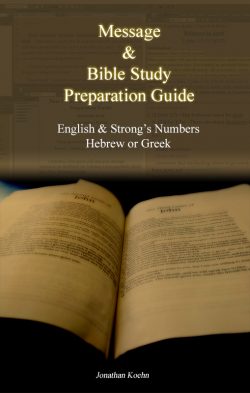
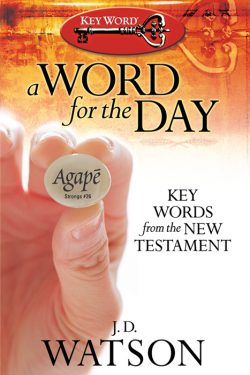
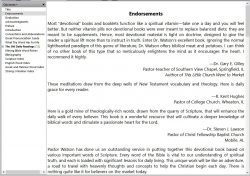
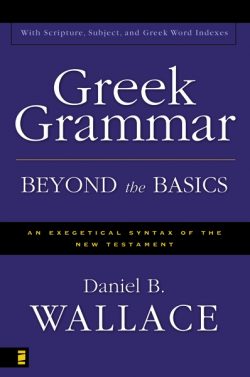


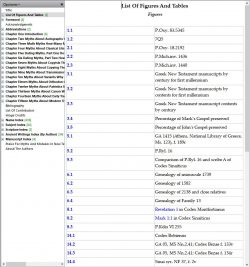
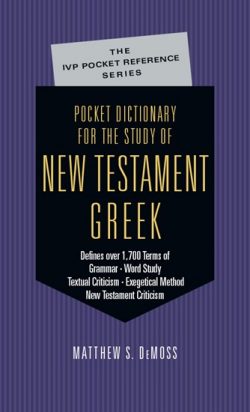
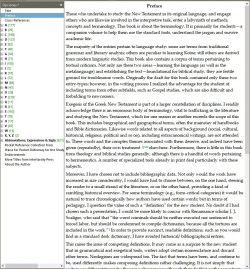
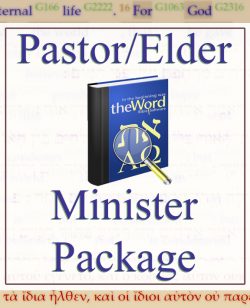
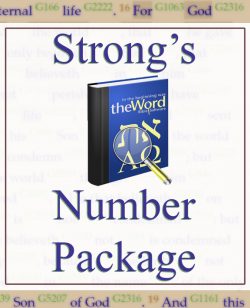
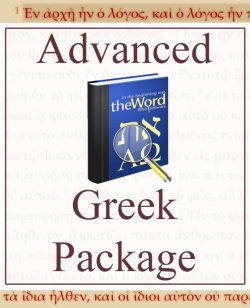
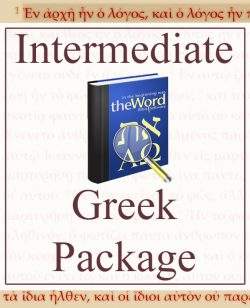
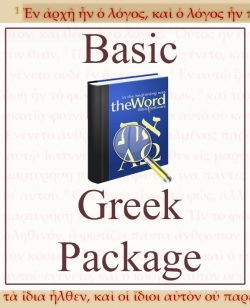
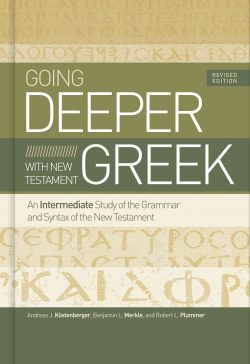
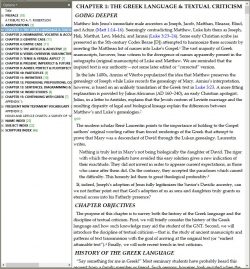
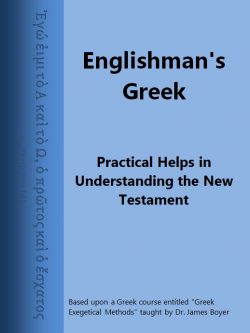
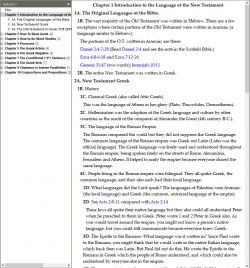
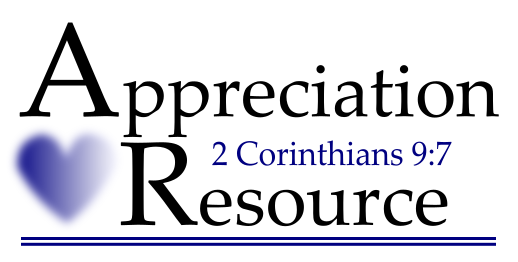
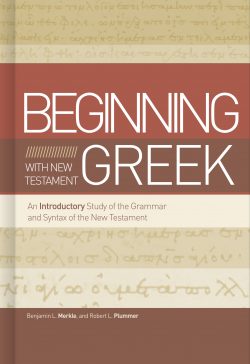
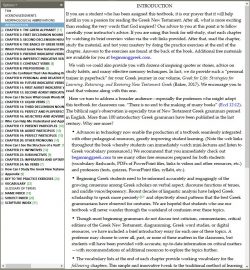
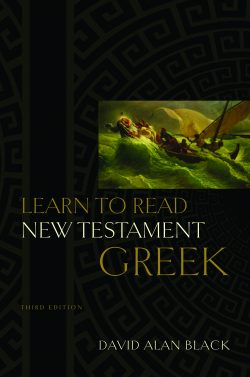
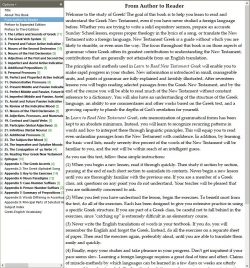
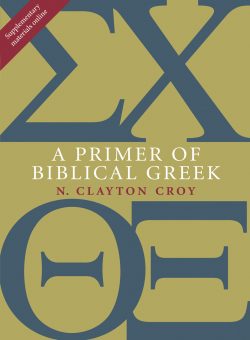
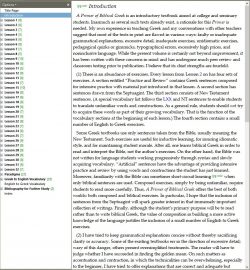
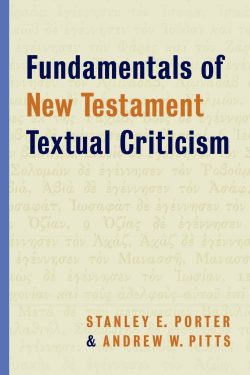
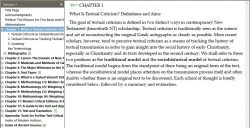
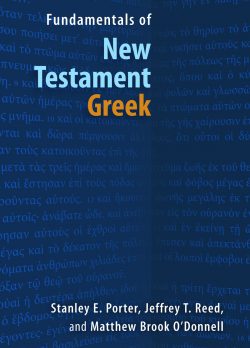
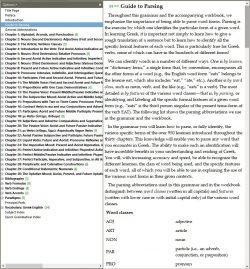
Wuest Word Studies in the Greek New Testament
These studies and translations of the Greek New Testament are simplified commentaries on the Greek text for the Bible student who is not conversant with the Greek language. The three-volume set includes commentaries on Mark, Romans, Galatians, Ephesians Colossians, Philippians, Hebrews, 1 Timothy, 2 Timothy, Titus, 1 Peter, 2 Peter, 1 John, 2 John, 3 John and Jude; graphic elucidations of selected passages, words, and phrases; and devotional studies on the teachings of Jesus and the apostles.
theWord Features